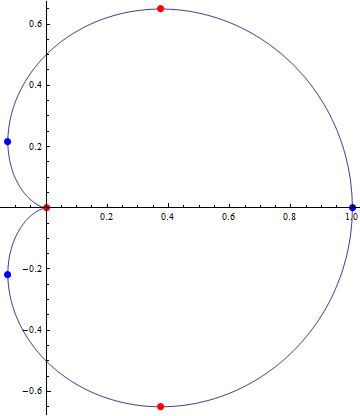is there any built in function that can be used to find maximum or minimum of implicit functions?
For example, if we have the equation
$$x^2 + y^2 = (2 x^2 + 2 y^2 - x)^2,$$
then we can visualize the set of all $(x,y)$ making the equation true using ContourPlot.
ContourPlot[
x^2 + y^2 == (2 x^2 + 2 y^2 - x)^2, {x, -1, 2}, {y, -1, 1},
AspectRatio -> Automatic]

Clearly, $y$ is not a function of $x$ but, in the neighborhood of most points on the graph, a function is implied, i.e. $y$ is implicitly a function of $x$. Is there any built in way to find the maximum and/or minimum value of this function (like what we have for the explicit functions)?








